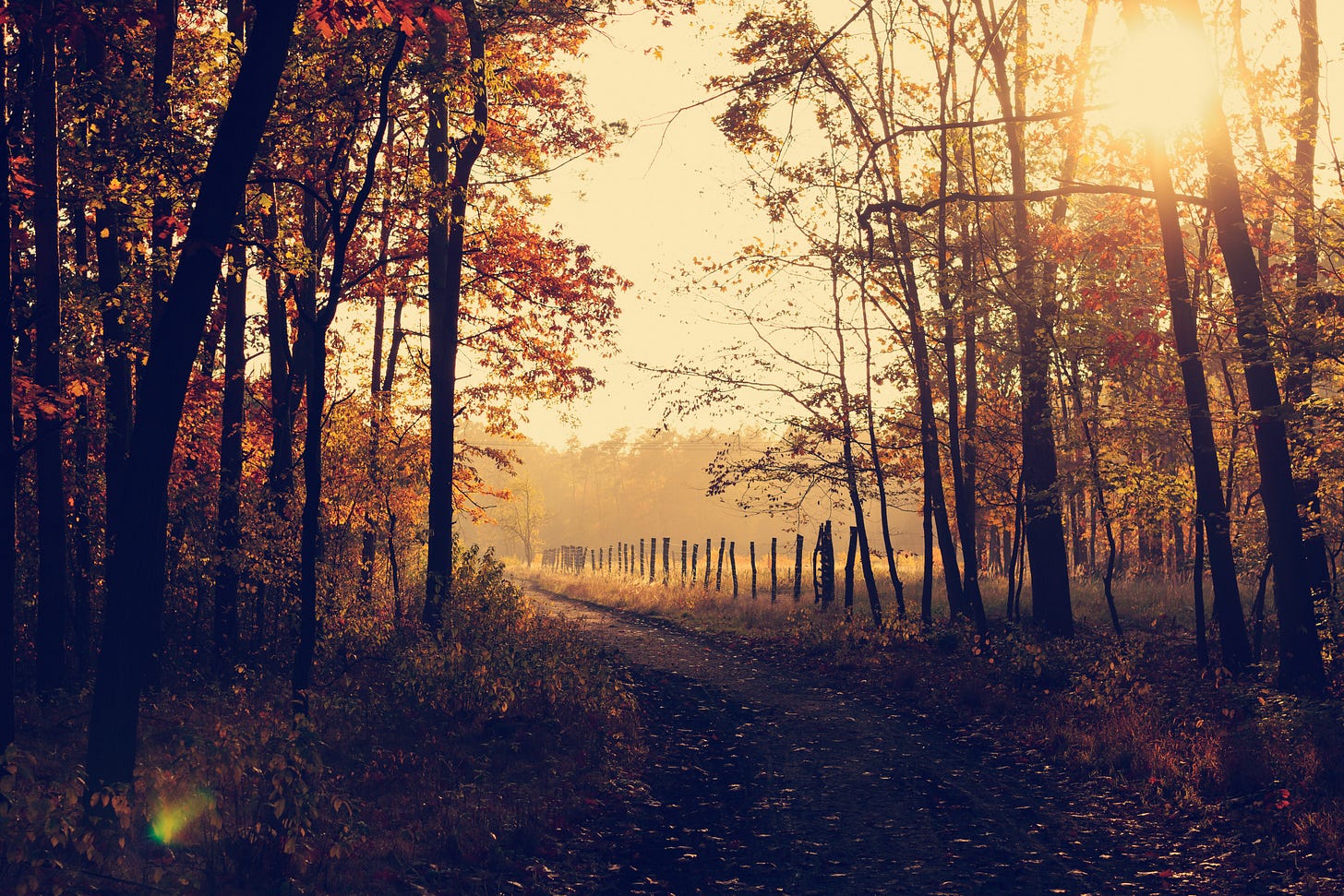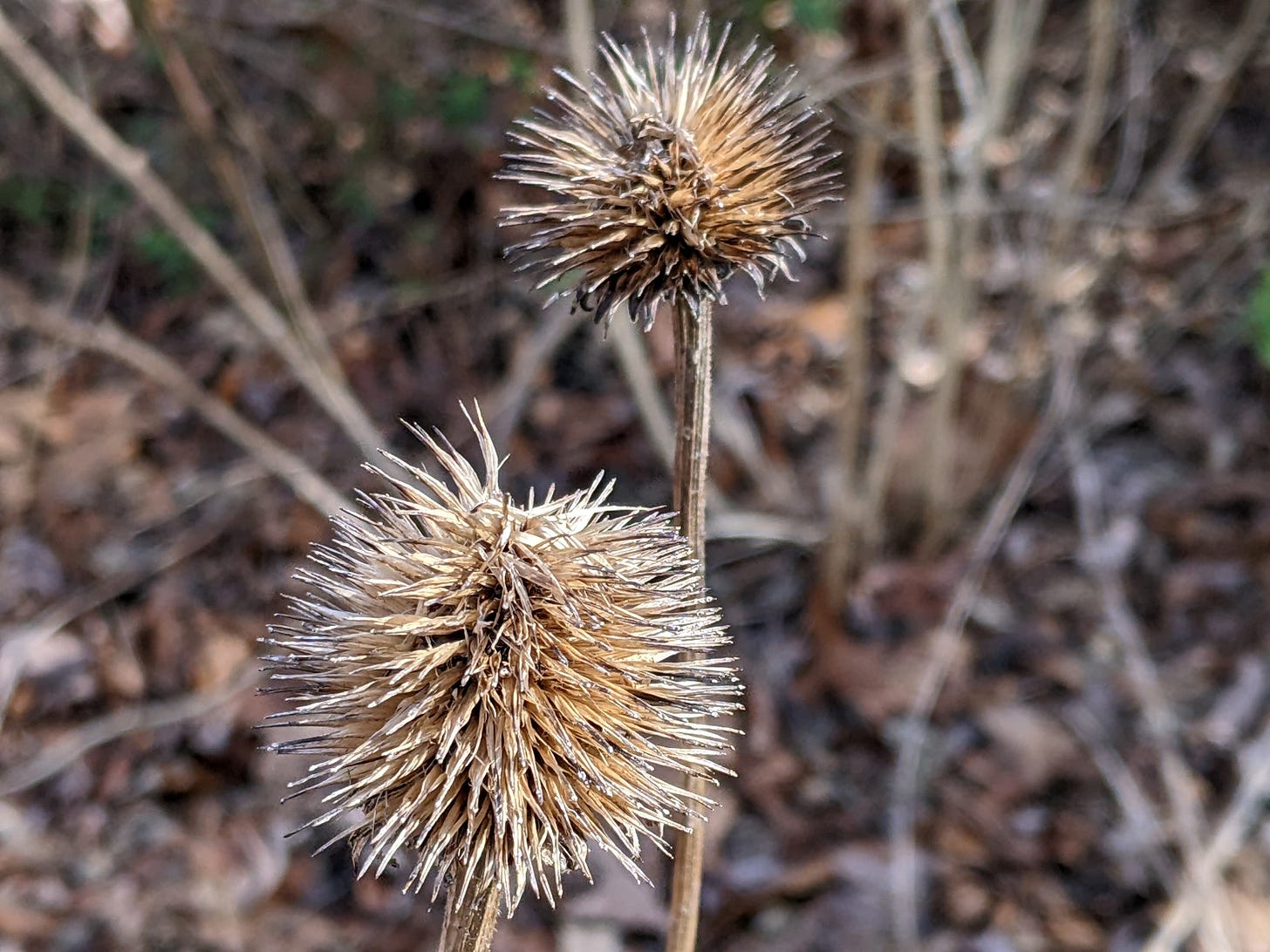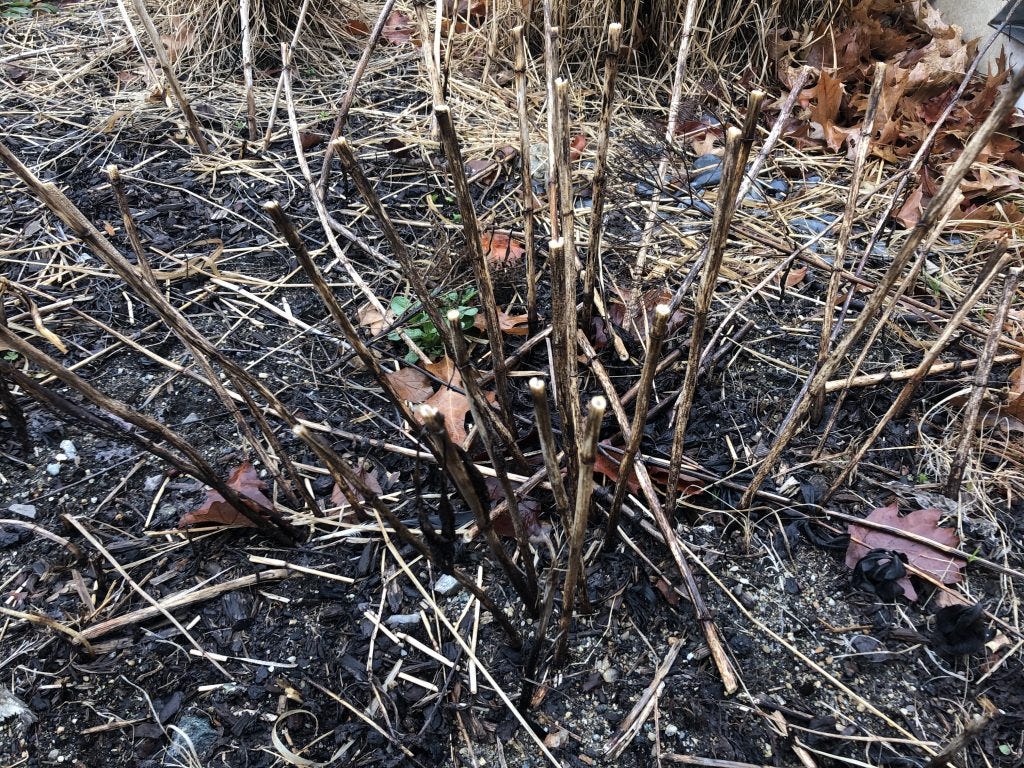
I love autumn – falling leaves, cooler temperatures, and the indescribably pleasant smell that accompanies the more temperate season.
The mood is restless, yet there’s also a quiet stillness.
I can imagine the trees yawning as they stretch out their limbs, shaking free any remaining leaves. All the vegetation quivers as squirrels and other creatures scurry through the understory gathering last-minute provisions. I can hear them but not see them. The activity makes me realize there’s more life around me than I thought.
That realization re-energizes me.
The one thing I don’t like about late autumn is the sad, forlorn look of the plants, especially in my garden. The washed-out colors of the wilting, dying flowers, leaves, and stems tell me they’re tired. The long, hot summer has drained their energy. They no longer greet me each morning with their vibrant, colorful blossoms bouncing in the breeze. Instead, their brown stems and bleached-out flowers rattle in the wind. It’s almost as if they’re saying goodbye.
I have some plants that’ll linger until the first frost, but the rest will soon be gone. Even though their blossoms will no longer be attracting any buzzing, flittering, creeping, crawling visitors, I refrain from clearing out the flowerbeds. The remaining seed heads and stems have another important job to do over the winter. They’ll provide food and cover for native bees and birds and positively impact the local ecosystem.

My Garden’s Winter Gig
During the cold, desolate months, the garden may look abandoned, but it’s actually a popular hangout for our feathered friends. Seed heads are a fantastic source of nutrition for overwintering birds. Goldfinches, Nuthatches, Chickadees, Cardinals, and Sparrows enjoy crunching the tasty treats.
Below are some perennials that not only provide seeds but also look pretty cool decked out in their winter drab:
(From https://www.nurturenativenature.com/post/essential-native-perennials-for-a-winter-seedhead-bird-garden)
Coneflower (Echinacea)
Hyssop (Agastache)
Aster (Symphyotrichum)
Bee-balm (Monarda)
Black-eyed or Brown-eyes Susan (Rudbeckia)
Goldenrod (Solidago)
Joe-Pye weed (Eutrochium purpureum)
Blanket flower (Gaillardia) self-seeding annual with a deliciously popular seedhead for birds.
Blue Mist flower (Conoclinium coelestinum)
Blazing Star (Liatris)
Mountain Mint (Pycnanthemum)
Stokes Aster (Stokesia)
Beardstongue (Penstemon)
Native Mallow (Hibiscus)
By the way, the birds show their appreciation for your kindness by spreading these beautiful, beneficial flowers elsewhere when they poop out any undigested seeds. So come next spring, you may find some coneflowers blooming in surprising places!
The other parts of the flowers have a job as well. The hollow flower stems make a lovely home for insects to overwinter. Bumble bees, Mason bees, and Leaf-cutter bees live inside the cavities of the plant material. Joe-Pye Weed, Swamp Milkweed, Bee Balm, Bergamot, Mountain Mints, and any other species with a hollow or pithy stem make a nice cozy bed for the bee larvae. Cut some stems back to between 6-18 inches tall to make it easy for the bees to find and use. According to Tufts University, leave those stems in place for two or three years to ensure that all bee offspring have emerged. Get the details here.
The more plant matter, leaves, and native grasses left standing, the better. The debris covering the surface of your garden provides a refuge for butterfly and moth pupae to overwinter on the fallen leaves. Wildlife, birds, and insects take advantage of the warm, dry shelter as well. In the meantime, as a bonus for us, the decomposing plant debris insulates plant roots and adds organic matter to the soil.
Sidenote: It’s a good idea to leave a bit of the ground uncovered for the bees and insects who nest underground.
When spring arrives, be sure to delay any garden clean-up until there are several consecutive days of temperatures above 50 °, as this is the ideal time for most pollinators to begin to wake up. For me, I do the bare minimum of clearing out only what I have to.
There you have it. Your garden not only brings life and beauty during the spring, summer, and autumn, but the dead plants also do a good deed during the winter. The best part – the plants do all the work by themselves. All you have to do is leave them alone and let Mother Nature take care of it.
~~~~~~~~~~~~~~~~~~~~~~~~~~~~~~~~~~
Dear Reader,
I'd be ever so grateful if you would take a few minutes to recommend Let's Get Our Hands Dirty to your followers on Substack and other social media platforms.
Thank you!
Greta
---------------------------
Let's Get Our Hands Dirty is a reader-supported publication. This post is free as are all my posts. Please subscribe so you can receive notification when new articles are published. I'd love for you to become a part of our nature-loving family. Basic subscriptions are free, but if you sign up for a paid subscription as a love offering, that would be wonderful and greatly appreciated!
Have a fabulous day,
Greta
Please use the buttons below to Like, Comment, Restack, and Share my post on Substack and other social media platforms.
THANK YOU SO MUCH!






When I still had a garden I always left all the seedheads and perennials on. It didn't always make the neighbours happy but the birds loved it.
It's so good that you are aware that "there’s more life around me" and you help wake others up to notice these things too. I love it that you refrain from removing faded flowers and stalks, so that nature's children can have food and shelter. What a good gardener!